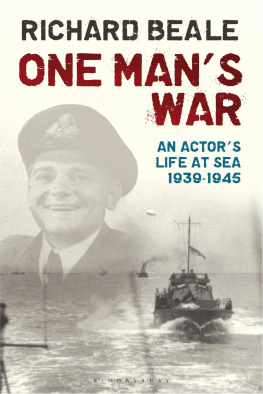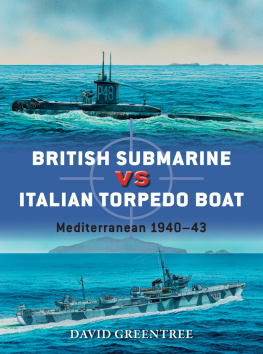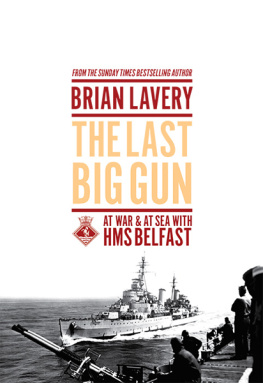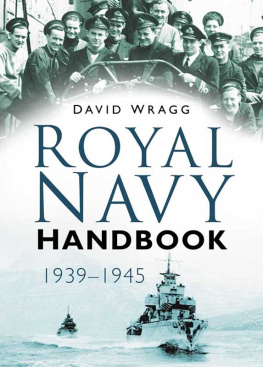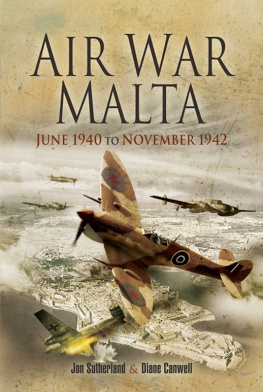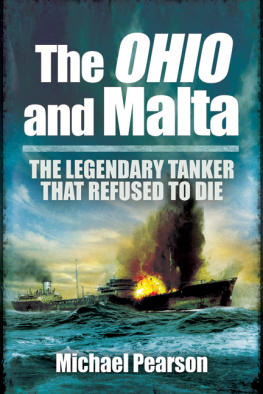
THE WATERY GRAVE
The Life and Death of HMS Manchester
This edition published in 2015 by Frontline Books,
an imprint of Pen & Sword Books Ltd,
47 Church Street, Barnsley, S. Yorkshire, S70 2AS
Copyright Richard Osborne, 2015
The right of Richard Osborne to be identified as the author of this work has been asserted by him in accordance with the Copyright, Designs and Patents Act 1988.
ISBN: 978-1-47384-585-5
PDF ISBN: 978-1-47384-588-6
EPUB ISBN: 978-1-47384-586-2
PRC ISBN: 978-1-47384-587-9
All rights reserved. No part of this publication may be reproduced, stored in or introduced into a retrieval system, or transmitted, in any form, or by any means (electronic, mechanical, photocopying, recording or otherwise) without the prior written permission of the publisher. Any person who does any unauthorized act in relation to this publication may be liable to criminal prosecution and civil claims for damages.
CIP data records for this title are available from the British Library
Printed and bound by CPI Group (UK) Ltd, Croydon, CR0 4YY
Typeset in 10/12 point Palatino
For more information on our books, please email: ,
write to us at the above address, or visit
www.frontline-books.com
Contents
List of Maps
Foreword
I grew up in Portsmouth and from 1956 went to school in Southsea. My bus journey took me past the Portsmouth Naval Base where, until 1958, I could see the cruiser HMS Liverpool laid up in Reserve. Liverpool was the name-ship of a sub-class of three ships belonging to the Town-class and had been badly damaged by torpedoes in the Mediterranean in both 1940 and 1942. The latter incident occurred during a Malta convoy code-named Operation Harpoon and the torpedo damage was so severe that Liverpool was not returned to service until after VE day. Gloucester, one of her two sisters, was sunk off Crete during May 1941 having run out of anti-aircraft ammunition. Her other sister, Manchester, was a Portsmouth-based ship and was lost during the Malta convoy code-named Operation Pedestal.
By the early 1960s I had read Volume II of Captain Stephen Roskills official history The War at Sea 1939 1945, and noted that he had recorded Manchester as being scuttled prematurely. Many of my school friends fathers had served in the Royal Navy during the Second World War but I could never persuade them to comment on the loss of Manchester. Eventually, one former Royal Navy officer who had served in the Mediterranean during 19411943 expressed the opinion that the loss of Manchester was not the Royal Navys finest moment but would not elaborate further.
In due course I became a University Lecturer in Pharmacology at the University of the West of England but continued to develop my interest in the Royal Navy and its ships as a hobby. From 1979 onwards I organised an annual meeting in Bristol for World Ship Society warship enthusiasts and, during the 2010 event, Dr Chris Simons, a university colleague of mine, gave an illustrated presentation about his dive on the wreck of Manchester the year before. This rekindled my interest in the loss of the cruiser and resulted in several visits to the National Archives at Kew where I was able to view the Minutes of the court martial convened to consider the loss of Manchester. These Minutes were written up in three volumes (with the National Archives references: ADM 156/209211), the last being ship plans, totalling 600 pages of questions and answers plus the apportionment of blame.
This book charts the origins and career of the Town-class cruiser Manchester from the date she was ordered until 13 August 1942 when she scuttled off Kelibia. I have drawn extensively upon the material in the Minutes of the court martial in an attempt to explain what happened that night in August 1942. However, to understand why Manchester was scuttled it is also necessary to consider her experience and that of her Captain during another Malta convoy, code-named Operation Substance, in July 1941. There is no doubt that the scuttling of Manchester triggered a robust response from the higher echelons in the Admiralty, not least because during 1941 and 1942 several British cruisers had been fought until they were sunk. The tame scuttling of a large cruiser therefore did not go down well with Their Lordships. In this book I have attempted to address the problems facing Manchesters commanding officer, the alternative actions he could have taken and the possible consequences for his ship and the convoy operation in which he was involved.
Richard Osborne
Nailsea, August 2015
Glossary
of Technical Terms and Abbreviations
AA | Anti-Aircraft. |
AB | Able Seaman. |
Abaft | A relative term used to describe the location of one object in relation to another in which the object described is farther aft than the other. |
Abeam | The bearing of an object 90 degrees from ahead (in a line with the middle of the ship). |
A bracket | A bracket supporting the after end of the propeller shaft and propeller in twin or multiple screwed ships having propellers fitted off the centreline. |
ABU | Auxiliary Back Up. |
ACNS | Assistant Chief of the Naval Staff. |
AFO | Admiralty Fleet Order. |
ADO | Assistant Divisional Officer. |
AMC | Armed Merchant Cruiser. |
AR.RDF | Aerial Ranging Radio Direction Finding. |
A/S | Anti-Submarine. |
ASDIC | Usually claimed to stand for Anti-Submarine Detection Investigating Committee but Willem Hackman (Seek & Strike: Sonar, Anti-Submarine Warfare and the Royal Navy 1914-54, HMSO 1984) could find no evidence for the existence of such a committee. He believed that the acronym stood for Anti-Submarine Division-ics the Department that initiated research into underwater detection during 1914-1918. Today ASDIC is known as SONAR. |
Athwartships | Across the ship, at right angles to the centreline. |
AW. RDF | Air Warning Radio Direction Finding. |
Barbettes | Structures upon which gun turrets rotate. Shells and propellants are passed up to the guns from the shellrooms and magazines |
Beam | The registered breadth of a vessel measured at the outside of the hull amidships, or at its greatest breadth. |
Bearing | The direction of an object with reference to you, your ship or another object. |
Bilge | Lowest points within hull compartments where liquids may accumulate. |
Bilge keel | Non-retractable elongated longitudinal fins protruding from the bilge and used to reduce rolling. |
BR | Book of Reference. |
Bulkhead | A vertical structural partition in a vessels interior dividing it into various compartments for strength and safety purposes. |
Bulkhead gland | Gland which allows bulkhead penetration by cables etc. without compromising the bulkheads watertight integrity. |
Bulwark | Barrier of stiffened plating at the outboard edge of the main or upper deck to prevent or inhibit the entry of the sea. |
Next page



